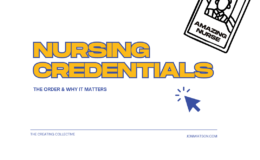Article: Tschannen, D. and Lee, E. (2012) The impact of nursing characteristics and the work environment on perceptions of communication. Nursing Research and Practice, E-pub February 22, 2012, 1-7. Retrieved from http://www.ncbi.nlm.nih.gov/pmc/articles/PMC3316962/pdf/NRP2012-401905.pdf.
Big Idea: Communication within health care is a major concern. Poor communication can lead to fatal errors. A stressful work environment may lead to break down of communication; the values of the work environment (i.e. respect, trust, etc.) likely impact communication, as well. In this cross-sectional, descriptive study, researchers analyzed 135 nurses’ individual nursing characteristics (i.e. experience, education, etc.) in relation to their self-reported perceptions of communication. The frontline nurses, both RNs and LPNs, were from four medical-surgical units at two hospitals.
Survey Says!: After many statistical tests, environmental values such as trust and respect, specific nursing unit, higher levels of nursing education, and more years of experience correlated with nurses’ increased perception of open communication among other nurses and physicians. Both the RN and the LPN groups agreed communication among nurses was more open than communication between nurses and physicians.
Quotable: “For the past three years, miscommunication has been identified as one of the most frequently identified root causes of sentinel events reported to The Joint Commission, with 82% of the sentinel events in 2010 identifying communication as the primary root cause [reference]” (p. 1).
“Understanding the environment (e.g., presence or absence of trust, respect, status equity, and time availability) is a foundational step that must occur before implementing any strategies aimed at improving communication. A failure to understand the environment may in part explain why no one strategy has been shown to consistently improve nurse-physician communication [reference]” (p. 6).
So What?: Not only does this article provide a method to measure nurses’ perceptions of open communication among units and hospitals, but it also gives practical solutions and ideas to improve open communication among the RN-LPN dyad as well as the nurse-physician dyad.





